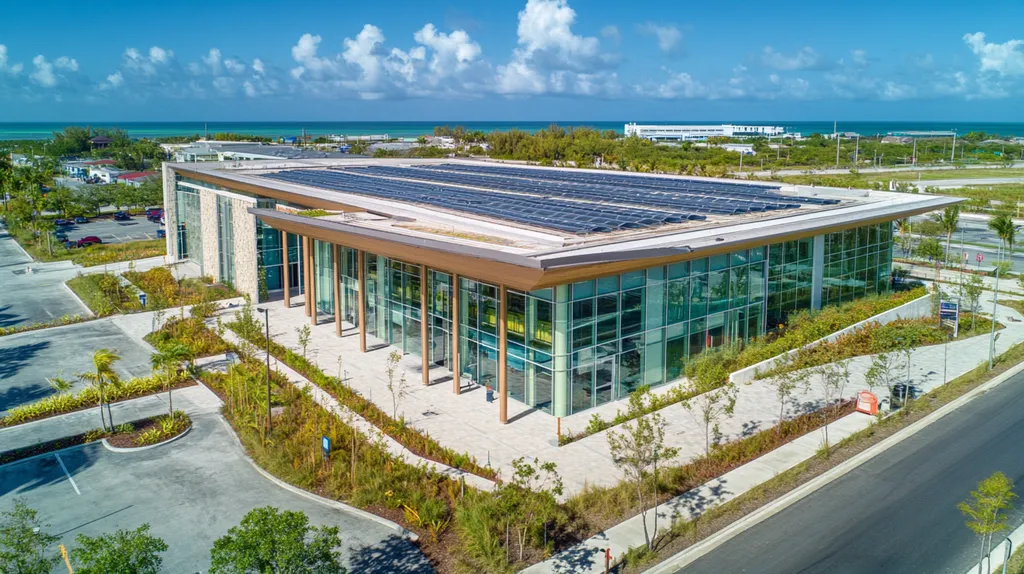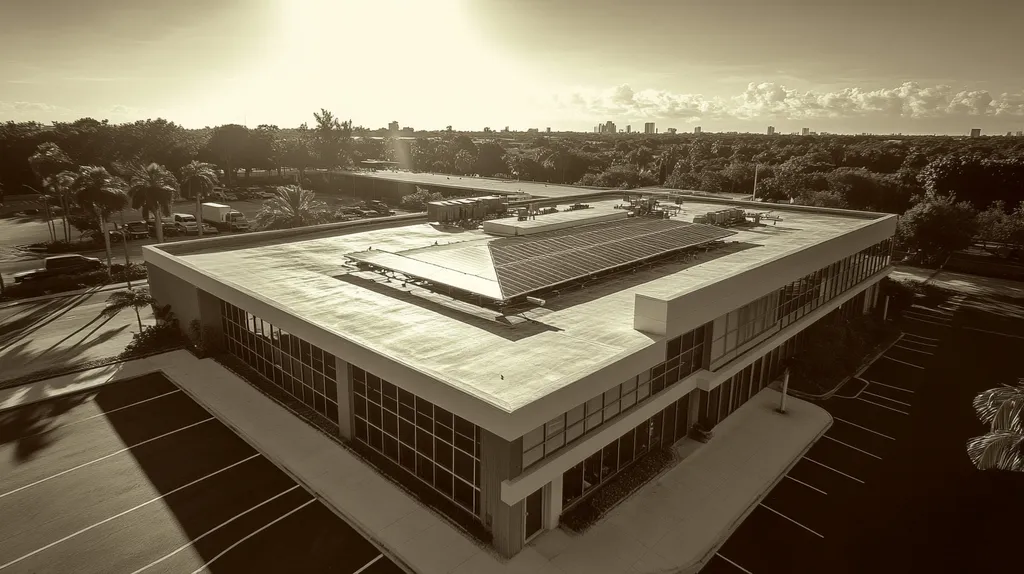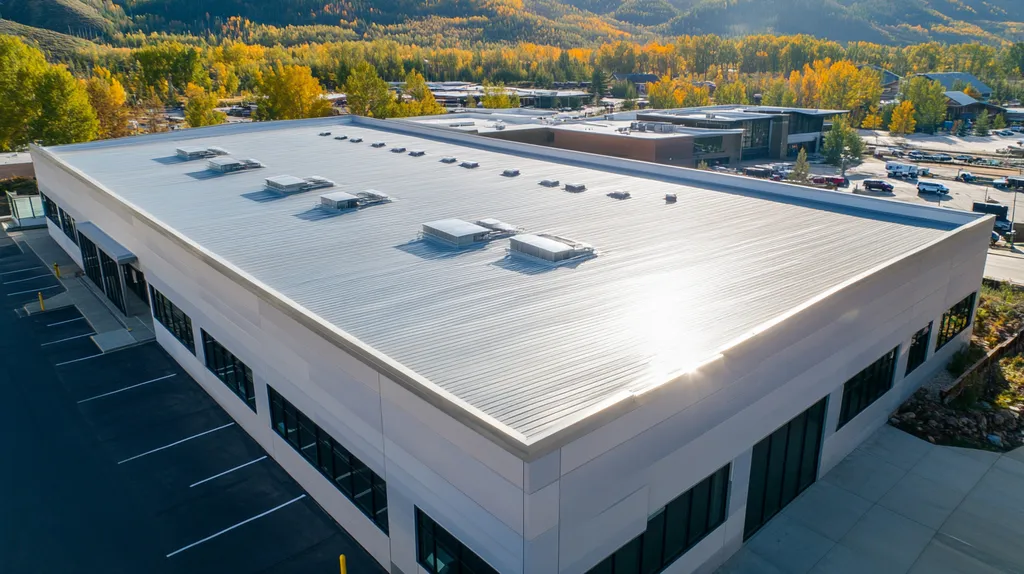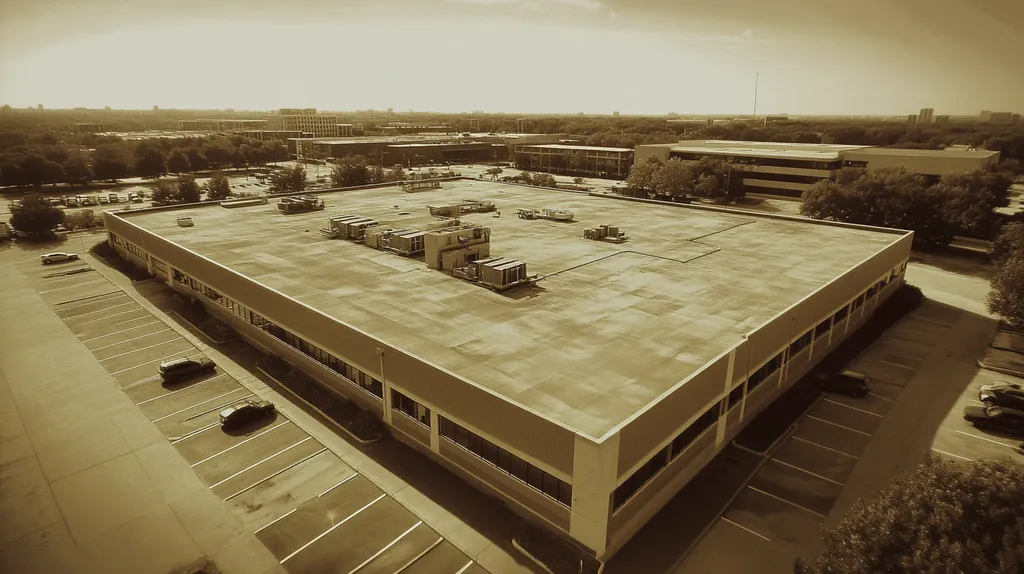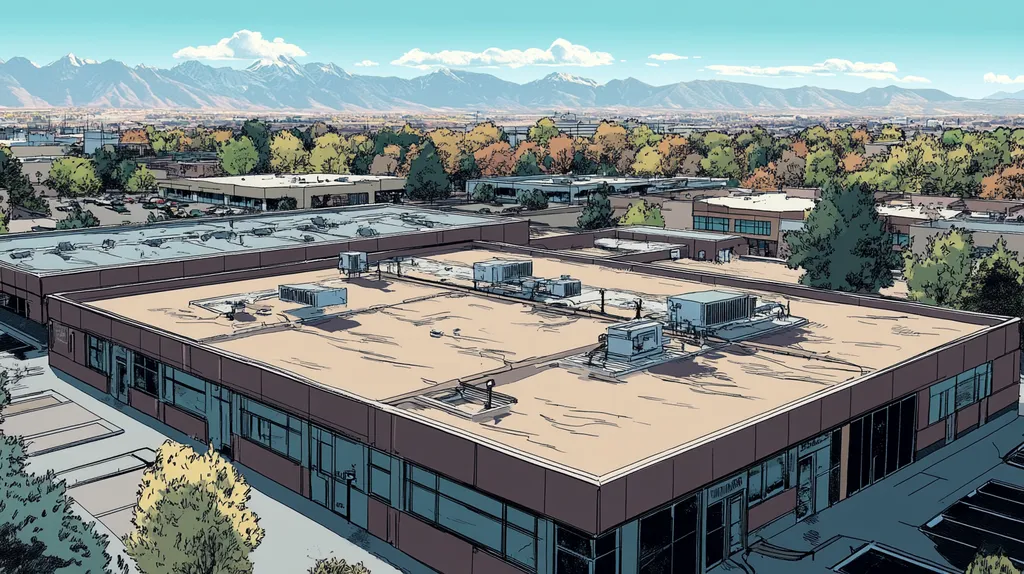Commercial roof signage lighting represents a critical yet often mismanaged aspect of property operations, with inefficient systems driving up to 40% higher energy costs while delivering subpar visibility.
Traditional integrated lighting approaches continue to dominate the market despite mounting evidence of their limitations in durability, maintenance requirements, and energy consumption.
This analysis examines why conventional methods fall short, explores the systemic issues behind poor lighting practices, and presents data-driven alternatives that can reduce operational costs while enhancing brand visibility.
SECTION 1: CURRENT PRACTICES
Commercial roof signage lighting plays a vital role in achieving maximum visibility, ensuring safety, and reinforcing brand identity. However, inadequate lighting practices can diminish a brand’s presence and create safety risks for users of the property. Presently, many organizations resort to outdated lighting methods that compromise both efficiency and effectiveness. This section explores the existing practices and underscores the urgent need for adopting innovative approaches to roof signage lighting systems.
Traditional Sign Lighting Methods
Many commercial properties continue to use conventional techniques, such as floodlights and spotlights, for their roof signage. These outdated methods often result in uneven illumination and dark areas that obscure brand visibility, especially at night.
Furthermore, traditional sign lighting frequently requires redundant systems to achieve adequate coverage, which can inflate both installation costs and energy bills. Property owners face a critical decision: rely on inefficient, outdated systems or invest in modern solutions that provide better performance.
These older lighting options are usually not energy-efficient and can significantly contribute to excessive energy consumption. This inefficiency is a growing concern for companies aiming to lower their environmental impact. With sustainability in mind, the need for innovative lighting solutions is more important than ever.
Moreover, older systems typically come with high maintenance costs. Property managers frequently deal with the challenge of continuous repairs, which can disrupt daily activities and lead to productivity losses. This scenario further emphasizes the pressing need for advanced alternatives that minimize both costs and maintenance efforts.
Common Lighting Technologies Used
Sign lighting technologies predominantly include incandescent bulbs, fluorescent tubes, and high-intensity discharge (HID) lights. While incandescent bulbs are common, they are notorious for their short lifespan and poor energy efficiency. As electricity costs climb, these options are increasingly becoming less viable.
Fluorescent lights have their own drawbacks, often flickering and providing uneven light distribution. This inconsistency can hinder signage readability, particularly during nighttime. Additionally, cold temperatures can negatively affect their performance, creating more maintenance requirements.
HID lights may offer brighter illumination, but they are still energy-intensive. Although they improve visibility, the total lifecycle costs may negate any initial benefits. Furthermore, the heat these lights generate can pose safety risks on commercial roofs if not properly managed.
Overall, the current landscape of lighting technologies exhibits significant gaps in efficiency and effectiveness. As businesses aim for heightened visibility, reassessing dependence on these outdated lighting solutions becomes increasingly necessary.
Standard Installation Practices
Many commercial roof signage lighting installations follow routine practices that lack innovation and adaptability. Traditional mounting techniques often do not optimize energy use or lighting flexibility, leading to inadequate illumination and unnecessary energy waste.
Standard installation generally involves fixed light placements, restricting adjustments in angles and coverage. This rigidity can create shadowed areas that hinder the promotional impact of signage—failing to account for the unique characteristics of each signage element.
Moreover, current installations often employ conventional wiring methods that are susceptible to weather damage. Corrosion and wear can necessitate frequent inspections and repairs, representing a continuous burden for property managers.
Safety during installation is frequently overlooked, increasing the risk for workers and building occupants. The absence of streamlined installation practices can prolong project timelines and elevate costs, making it essential for businesses to rethink their approach to signage lighting.
SECTION 2: SYSTEMIC ISSUES
The reliance on conventional integrated approaches for signage lighting on commercial roofs results in significant systemic issues. Energy inefficiencies can contribute to escalating utility costs, putting strain on operating budgets. According to the U.S. Department of Energy, lighting constitutes nearly 20% of energy usage in commercial buildings. This statistic underscores the necessity for property owners to reevaluate their lighting strategies, particularly those that rely on outdated technologies. This section will delve into energy inefficiencies, maintenance hurdles, and durability challenges that plague current practices.
Energy Inefficiencies and Costs
Many conventional integrated lighting systems are not designed for optimal energy efficiency. Technologies like incandescent and halogen bulbs consume excessive electricity and are prone to frequent replacements. For large commercial properties that depend on these systems for extensive signage, this can lead to thousands of dollars in costs each year.
Furthermore, businesses often neglect the hidden expenses tied to high energy consumption. Rising energy bills can divert funds away from other critical services or necessary improvements. Evaluating more energy-efficient options, such as LED lighting systems, is essential since they consume dramatically less energy and have longer lifespans.
For instance, transitioning from traditional fluorescent fixtures to LED technology can cut energy costs by up to 75%. This substantial reduction not only relieves financial pressure but also supports sustainability efforts, a growing priority for today’s consumers. An energy-efficient lighting solution can enhance a company’s public image while reducing operational expenses.
Maintenance and Replacement Challenges
Maintaining conventional signage lighting systems can create logistical challenges for property managers. The need for frequent bulb changes and repairs often diverts attention and resources away from core operations. This can result in increased labor costs and disruption of productivity.
Moreover, traditional fixtures may necessitate specialized servicing, complicating quick repairs. For example, a failed sign light might require costly equipment such as a crane to access roof-mounted fixtures, prolonging downtimes and delaying responses.
The irregular replacement of outdated systems usually leads to subpar lighting performance. As a result, uneven or insufficient illumination can negatively impact visibility, harming customer engagement and satisfaction.
While establishing proactive maintenance schedules can ease some of these challenges, they demand constant attention and commitment. Such requirements can put additional strain on facilities teams and disrupt overall operational efficiency.
Limited Durability and Weather Resistance
Conventional integrated lighting solutions frequently struggle to withstand the harsh conditions found on commercial roofs. Standard fixtures often lack the durability needed to endure extreme temperatures, heavy rain, and strong winds, leading to premature failures.
For instance, standard bulbs may not be suited for outdoor exposure, resulting in water intrusion and electrical issues. These failures can dim or darken signs, adversely affecting brand visibility.
Additionally, weather-related deterioration adds to long-term costs for replacements and repairs. Frequently reinstalling lights due to failures undermines reliability and can frustrate property management.
Investing in robust lighting solutions, such as weather-rated LED fixtures, can mitigate these risks. By doing so, property owners not only enhance performance but also extend the lifespan of their lighting systems, leading to lower long-term costs and a stronger brand presence.
SECTION 3: MISSED OPPORTUNITIES
Commercial property owners and facility managers often miss important advancements in integrated lighting for signage, resulting in unnecessary expenses and lost opportunities. Sticking to outdated methods can lead to higher energy consumption, frequent maintenance needs, and compromised signage effectiveness. In a competitive landscape, failing to embrace modern lighting solutions can hinder visibility and the overall performance of roof signage.
Overlooking Solar Power Integration
Solar power presents a significant opportunity for lighting signage on commercial roofs. Many property owners still rely on traditional electrical systems, which can incur high costs and have a negative environmental impact. By integrating solar technology, businesses can substantially reduce energy expenses while creating a sustainable lighting solution.
Solar-powered systems operate independently of the grid, ensuring that signs remain illuminated during power outages. This independence not only bolsters reliability but also enhances energy resilience—a vital consideration for commercial properties.
Moreover, investing in solar solutions can help properties achieve green building certifications. Those who overlook this option risk falling behind competitors whose focus on sustainability is becoming increasingly important.
In summary, neglecting solar power integration in roof signage lighting can elevate operational costs and lead to missed marketing opportunities.
Neglecting Advanced LED Technologies
Advanced LED technologies are transforming the landscape of integrated lighting for roof signage. However, many commercial property owners continue to rely on outdated fluorescent or incandescent lights, unaware that these options waste energy and provide limited visibility for signage.
In contrast, modern LED lights offer enhanced brightness and longevity with significantly reduced energy consumption. Switching from traditional fixtures to LED can reduce energy usage by up to 75%, improving visibility while lowering operating costs.
Additionally, LEDs enable dynamic lighting options, including color-changing effects and programmable messages. Overlooking these advancements can leave businesses at a disadvantage when it comes to attracting customer attention.
Ultimately, neglecting modern LED technologies can stifle a property’s potential for visibility and energy savings, adversely impacting its financial performance.
Ignoring Customizable Lighting Solutions
Customizable lighting solutions are essential for effective commercial signage, yet many property owners rely on one-size-fits-all approaches that lack flexibility and creativity. This can result in signage that fails to engage the target audience effectively.
Customizable fixtures can be designed to align with brand aesthetics, improving nighttime visibility and overall appeal. Ignoring these opportunities means settling for generic lighting that dilutes a brand’s uniqueness in a competitive market.
Furthermore, customizable systems can be integrated with building management software, allowing for real-time monitoring and adjustments. This capability not only enhances operational efficiency but also ensures that signage remains aligned with evolving marketing strategies.
In failing to adopt customizable lighting solutions, properties risk undermining their ability to effectively communicate their brand message and connect with potential customers.
SECTION 4: ROOT CAUSES
Implementing effective integrated lighting for commercial roof signage is critical for enhancing visibility, brand presence, and safety. Poor illumination affects customer engagement, potentially reducing foot traffic by as much as 30%, which can have a detrimental impact on revenue. Understanding the root causes behind inefficient lighting practices is essential for developing improved strategies. This section identifies three key issues: lack of long-term planning, inadequate assessment of lighting needs, and insufficient consideration of environmental factors.
Lack of Long-Term Planning
A common oversight among property owners is underestimating the long-term implications of their lighting decisions. Many view signage lighting as a one-time setup, neglecting to account for future maintenance and replacement costs. Without a strategic long-term plan, lighting can quickly become outdated, leading to rising expenses in the future.
A thorough lighting design process should include an assessment of technological advancements and regulatory changes. For example, the rise of LED technology offers significant opportunities for energy savings and improved visibility that can be lost when properties stick with outdated systems.
Furthermore, planning must align with the company’s overarching branding strategy. If lighting does not support brand goals, it may confuse potential customers and weaken marketing efforts.
In summary, overlooking comprehensive long-term strategies introduces operational challenges and increased costs. Ensuring a forward-thinking approach is crucial for maintaining effective and efficient lighting systems.
Inadequate Assessment of Lighting Needs
Understanding lighting requirements is vital for both functional and aesthetic success. Often, facilities managers conduct only basic evaluations, leading to poor decisions that fail to meet the actual needs of the signage. For example, signage located in high-traffic areas typically requires more powerful illumination than signs in less active zones.
Inadequate assessments may also miss essential factors like peak visibility hours and local competition. If signs are not adequately lit when potential customers are present, businesses risk losing engagement to competitors with superior visibility.
Additionally, the properties of the signage materials themselves can dictate specific lighting needs. For instance, reflective surfaces may necessitate targeted lighting to minimize glare while maximizing impact.
The repercussions of a rushed assessment include wasted resources and a direct negative impact on brand perception and sales. Organizations can achieve improved outcomes by investing time in comprehensive evaluations at the outset.
Insufficient Consideration of Environmental Factors
Factors such as weather conditions, geographic location, and building orientation significantly influence the effectiveness of commercial roof signage lighting. For instance, systems in regions subject to heavy snowfall must be designed to resist ice buildup.
Sunlight exposure can also affect the daytime visibility of certain lighting systems. Failing to account for these variables can result in signage that fails to attract customer attention when it matters most.
Furthermore, regional energy consumption regulations frame the sustainability of lighting solutions. Ignoring local compliance can lead to fines and necessitate costly adjustments.
Integrating environmental factors into planning enables businesses to not only adhere to regulations but also optimize the effectiveness of their signage. Taking these considerations into account leads to amplified visibility, enhanced brand impact, and a longer lifespan for lighting systems.
DATA DRIVEN EVIDENCE
The imperative for modernizing commercial roof signage lighting systems cannot be overstated. In a time when energy efficiency is critical for financial health and environmental consciousness, sticking with traditional integrated lighting approaches can be detrimental. Reports indicate that businesses can save up to 70% on lighting expenses by adopting LED alternatives. Failing to transition not only inflates operational costs but also diminishes visibility and brand impact during key moments.
Energy Consumption and Cost Analysis
Current integrated lighting solutions can significantly drain energy resources. For instance, many traditional systems consume approximately 200 watts per sign, leading to inflated electricity bills. In contrast, LED systems often require just 50 watts, making a considerable difference in cost savings.
The average commercial property owner can anticipate monthly lighting savings of about $30 to $150, depending on building size and signage scale. Over a year, these savings could reach upwards of $1,800, which can then be redirected toward other operational needs.
Beyond financial advantages, reducing energy consumption also minimizes a property’s carbon footprint. As sustainability increasingly shapes brand identity, addressing energy use helps fulfill customer expectations for environmental stewardship.
Investing in energy-efficient lighting is becoming a necessity for reducing operational expenses and enhancing brand reputation. Property owners must evaluate their current systems for potential energy efficiencies to remain competitive in the market.
Lifespan and Maintenance Statistics
Traditional lighting systems have a considerably shorter lifespan compared to modern alternatives. Fluorescent lights typically last about 15,000 hours, whereas high-quality LEDs can last up to 50,000 hours. This disparity affects replacement costs and associated labor for maintenance.
Facility managers often report allocating up to 40% of their annual maintenance budget to replacing and repairing outdated systems. By adopting newer options, these funds could be redirected to other operational areas.
Moreover, LED systems maintain consistent brightness throughout their lifespan, ensuring a unified brand presence. This longevity means fewer disruptions or safety hazards due to burnt-out lights, which can negatively impact a company’s visibility and customer engagement.
To enhance operational efficiency, property owners must consider both long-term savings and the value of reduced maintenance when assessing their lighting solutions.
Case Studies on Alternative Lighting Systems
Several companies have made successful transitions to innovative lighting systems, demonstrating significant benefits. For example, a major retail chain replaced its traditional signage lighting with high-efficiency LED units and reported a 60% reduction in energy costs within the first year.
In another case, a logistics facility switched to solar-integrated LED lights, improving nighttime visibility and eliminating ongoing electric expenses. This change led to a return on investment within just two years.
Case studies from various industries reveal the transformative potential of updated lighting solutions. Such innovative approaches not only boost profitability but also signal a company’s commitment to sustainability.
By learning from these examples, property owners can sidestep common pitfalls associated with outdated lighting methods and implement proactive changes that positively impact their bottom line.
SECTION 6: ALTERNATIVE SOLUTIONS
As commercial property owners and facility managers navigate the rising costs and visibility challenges associated with roof signage lighting, it is crucial to explore alternative solutions. Traditional methods can lead to excessive energy consumption and poor visibility, hindering brand impact. Fortunately, innovative technologies such as solar-powered systems, high-CRI LEDs, and smart lighting controls present more sustainable and effective options. This section highlights these alternatives and their relevance in today’s market.
Implementing Solar-Powered Sign Lighting
Solar-powered sign lighting is a groundbreaking solution that leverages renewable energy sources. By installing solar panels on the roof, property owners can drastically cut their electricity expenses. These systems offer the flexibility to be placed anywhere without relying on existing electrical infrastructure, easing installation challenges.
Additionally, solar-powered lights provide consistent illumination without increasing carbon footprints. With fewer components than traditional systems, maintenance requirements decrease, reducing potential points of failure. Prompting a shift toward solar solutions not only enhances a property’s appeal but also aligns with sustainability initiatives.
Numerous organizations have transitioned to solar sign lighting with remarkable success. For example, one retail chain reported a 30% reduction in energy costs after adopting solar-powered options. Such results underscore the viability of solar technology for effective signage illumination.
Utilizing solar lighting not only benefits the environment but also elevates a company’s public image. As consumers increasingly prioritize eco-friendly practices, solar solutions can significantly bolster brand visibility in competitive landscapes.
Utilizing High-CRI LED Sign Lights
High Color Rendering Index (CRI) LED sign lights represent another promising alternative by providing superior color accuracy and vibrancy. Unlike conventional lighting, high-CRI LEDs enhance the visual appeal of signs, ensuring colors stand out and effectively attract attention. This feature is vital for successful branding and marketing strategies.
High-CRI LEDs also consume far less energy than traditional bulbs, delivering the dual advantage of reduced costs alongside a lower environmental impact. Furthermore, these LEDs have longer operational lifespans, which minimizes the frequency of replacements and subsequent maintenance efforts.
A commercial property that switched to high-CRI LED lights reported a 50% increase in customer engagement concerning its signage. This notable change emphasizes the tangible benefits high-CRI LEDs can bring, particularly during peak hours or special events.
By adopting high-CRI LED technology, businesses can present their products or services more effectively. This innovation not only optimizes operational efficiency but also enhances overall brand image.
Integrating Smart Lighting Control Systems
Smart lighting control systems offer a sophisticated approach to roof signage illumination. These systems can automatically adjust lighting based on environmental conditions, ensuring signage remains prominent and visible at all times. This capability is essential for improving visibility while minimizing energy waste during off-peak periods.
Moreover, smart systems allow for programming flexibility, enabling lights to dim during low-traffic times or intensify when foot traffic increases. This adaptability results in significant operational cost savings, leading to better returns on investment.
Real-world examples demonstrate the success of smart lighting. A logistics company that implemented an intelligent lighting system achieved a 40% reduction in energy consumption within a year, all while maintaining excellent visibility.
Transitioning to smart control systems not only reduces costs but also enhances operational efficiency. By integrating these advanced technologies, facilities can position themselves as leaders in sustainability and operational excellence.
The Bottom Line
The data clearly shows that conventional integrated lighting approaches for commercial roof signage are costing businesses up to 40% more in energy expenses while delivering subpar visibility and brand impact.
With LED technology now offering 75% energy savings and solar solutions providing complete grid independence, continuing to rely on outdated systems represents a significant competitive disadvantage.
Smart lighting controls and high-CRI LED systems have demonstrated ROI periods of under 24 months while dramatically improving signage effectiveness.
As sustainability requirements tighten and energy costs continue rising, property owners who fail to transition to modern integrated lighting solutions risk both financial underperformance and diminished market presence.
The time for incremental improvements has passed – comprehensive lighting modernization is now a strategic imperative for commercial properties.
FREQUENTLY ASKED QUESTIONS
Q. What are common practices for commercial roof signage lighting?
A. Current practices primarily involve using floodlights and spotlights. These conventional methods often result in uneven illumination and dark areas, hindering brand visibility and safety. Additionally, they can incur high installation and energy costs, as many properties still rely on inefficient and outdated systems.
Q. How do systemic issues affect commercial roofs?
A. Systemic issues stem from over-reliance on traditional approaches, leading to energy inefficiencies. These inefficiencies increase utility expenses significantly over time, making it essential for owners to reassess their lighting strategies to lower operational costs and improve efficiency.
Q. What opportunities are missed with outdated lighting?
A. Overlooking modern lighting solutions, such as solar or advanced LED technologies, can lead to higher energy costs and compromised brand visibility. As competition increases, failing to innovate results in lost marketing opportunities and diminished customer engagement.
Q. What are the root causes of inefficient lighting practices?
A. Inefficient lighting practices often result from inadequate long-term planning, poor assessment of actual lighting needs, and insufficient consideration of environmental factors. These oversights lead to increased operational challenges and costs over time.
Q. What does data say about modern signage lighting?
A. Reports show that businesses adopting LED alternatives can save up to 70% on lighting expenses. Additionally, LED systems offer longer lifespans and reduce maintenance costs, making them a financially beneficial choice for companies looking to improve their operational budgets.
Q. What alternative solutions exist for roof signage lighting?
A. Alternative solutions include solar-powered lighting, high-CRI LEDs for enhanced color rendering, and smart lighting control systems. These options not only reduce energy consumption but also improve overall brand visibility and long-term sustainability for commercial properties.
Q. How can I ensure optimal lighting for a commercial roof?
A. To ensure optimal lighting, conduct a thorough evaluation of your signage’s visibility needs. Consider factors like peak traffic times and local environmental conditions. Investing in energy-efficient systems with better durability and adaptability can enhance visibility and reduce future costs.

